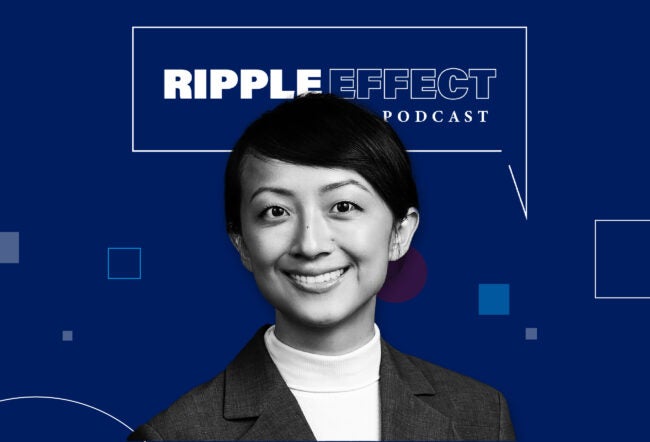Decentralized Finance — or DeFi — has experienced explosive growth in the past year. But in order for DeFi to fulfill its promise as a disintermediated ecosystem that helps rather than harms, “now is the time to evaluate its benefits and dangers,” write Wharton legal studies and business ethics professor Kevin Werbach and David Gogel, a recent Wharton MBA graduate, in the article that follows. Werbach is author of the book The Blockchain and the New Architecture of Trust and leads Wharton’s Blockchain and Digital Asset Project. Werbach and Gogel recently collaborated with the World Economic Forum to create the Decentralized Finance (DeFi) Policy-Maker Toolkit, providing guidance to regulators and blockchain watchers everywhere.
Intermediaries have always played essential roles within financial markets, facilitating trust, liquidity, settlement, and security. Yet these benefits come with costs. Intermediation contributes to slow settlement cycles, inefficient price discovery, and limitations on market access. Financial services markets tend to be highly concentrated, with a few powerful intermediaries exercising significant control and extracting substantial rents. Since the 2008 Global Financial Crisis, there has been increased attention on structural inequalities and hidden risks of the financial system. Recent controversies such as the GameStop short squeeze, in which retail investors were blocked from trading during a period of volatility, also cast a spotlight on the shortcomings of legacy financial infrastructure.
Until now, however, intermediation was a necessary feature of finance. Even peer-to-peer fintech lending platforms such as Prosper and cryptocurrency exchanges such as Coinbase retain an important central role. This is the environment in which Decentralized Finance (DeFi) has emerged.
DeFi is a developing area at the intersection of blockchain, digital assets, and financial services. DeFi protocols seek to disintermediate finance through both familiar and new service arrangements. They use stable-value cryptocurrencies known as stablecoins as assets, blockchain ledgers for settlement, and software-based smart contracts to execute transactions automatically.
The market experienced explosive growth beginning in 2020. According to tracking service DeFi Pulse, the value of digital assets locked into DeFi services grew from less than $1 billion in 2019 to over $15 billion at the end of 2020, and over $80 billion in May 2021. Novel business models such as yield farming — in which holders of cryptocurrencies earn rewards for providing capital to various services — and aggregation to optimize trading across exchanges in real-time are springing up rapidly. Innovations such as flash loans, which are either repaid or automatically unwound during the course of a transaction, open up both new forms of liquidity and unfamiliar risks.
“As with everything in the cryptocurrency world, hype around DeFi is sometimes out of control.”
Despite its scale and potential significance, DeFi is still early in its maturation. Now is the time to evaluate its benefits and dangers. As with everything in the cryptocurrency world, hype around DeFi is sometimes out of control. Extraordinary — and unsustainable — short-term returns warped investor expectations and attracted bad actors as well as innovative builders. Most DeFi activity is still speculative and conducted by relatively sophisticated cryptocurrency holders. As mainstream usage grows, risks and regulatory considerations will loom increasingly large.
This was the backdrop for a collaboration we have been involved with for nearly a year between the Wharton School of the University of Pennsylvania and the World Economic Forum. Wharton’s Blockchain and Digital Asset Project assembled a global network of regulators, DeFi industry experts, and academics to bring clarity to the DeFi landscape. Our goal is to shed light on business dynamics of this fast-evolving ecosystem, identify key risk areas, and help policymakers develop appropriate strategies.
DeFi is a general term covering a variety of activities and business relationships. We define four requirements: financial services; trust-minimized operation and settlement on a blockchain; non-custodial design; and systems that are open, programmable, and composable. We then identify six major DeFi categories — stablecoins, exchanges, credit, derivatives, insurance, and asset management — as well as auxiliary services such as wallets and oracles (external information feeds). Most resemble traditional financial services, at least on the surface. However, they operate without intermediaries. Many incorporate cryptocurrency-based incentive structures to aggregate capital, maintain efficient pricing, and participate in governance decisions.
Within and beyond the categories described here, DeFi is evolving rapidly. Developers are experimenting with new services, business models, and combinations of DeFi protocols. Technologies are maturing. Services are moving to decentralized management and governance of protocols. Tools are emerging to simplify the user experience on and across DeFi services. A significant aspect of ongoing DeFi development will involve the composition of financial primitives as “Money Legos” which can be reassembled in new and dynamic ways.
While DeFi is an exciting, fast-growing area, it also has its critics, risks, and unknowns. And indeed, there have already been significant examples of fraud, successful attacks, governance controversies, and other failures in the DeFi world. The underlying systems remain immature, with a variety of unresolved economic, technical, operational, and public policy issues that will be important to address. Although some protocols have attracted significant capital and the associated network effects in a short period of time, the DeFi sector remains volatile. Activity to date has concentrated on speculation, leverage, and yield generation among the existing community of digital asset holders. The very flexibility, programmability, and composability that make DeFi services so powerful also expose new risks, from hacks to unexpected feedback loops among protocols.
“DeFi will ultimately succeed or fail based on whether it can fulfill its promise of financial services that are open, trust-minimized, and non-custodial, yet still trustworthy.”
Developers are actively working to address vulnerabilities and introduce new mechanisms to manage risks efficiently, but the process is ongoing. DeFi will ultimately succeed or fail based on whether it can fulfill its promise of financial services that are open, trust-minimized, and non-custodial, yet still trustworthy. Government action will play a role here. Poorly designed regulation could cut off innovation and push illicit activity underground. However, insufficient oversight could result in massive investor harm, widespread theft and illegal activity, abusive practices, and unsustainable risks of catastrophic failures.
Our first report, DeFi Beyond the Hype, demystifies the DeFi phenomenon. It describes defining characteristics of DeFi services, the structure of the DeFi ecosystem, and emerging developments. Our second report, the Decentralized Finance (DeFi) Policy-Maker Toolkit lays out a roadmap for addressing the serious public policy questions that DeFi raises. It breaks down five categories of DeFi risks: financial, technical, operational, legal compliance, and emergent. Some of these, such as liquidity risk, are familiar from traditional finance. Certain conventional considerations such as counterparty risk may actually be mitigated in DeFi due to the automated operation of smart contracts and the use of blockchain as a settlement mechanism. On the other hand, DeFi opens up a variety of novel risks such as smart contract failures, extraction of value by proof of work miners, and failures of decentralized governance systems. The report helps policymakers assess these risks, and offers resources and guidance to address them in a balanced manner.
Put simply, policymakers and DeFi developers need to understand each other better. DeFi could be a vehicle to achieve important public policy goals of more efficient capital formation, financial inclusion, a fairer financial system, and better transparency. Or it could produce harms that overwhelm the benefits. Now is the time to address these concerns. Better understanding of the DeFi phenomenon is an essential first step.



